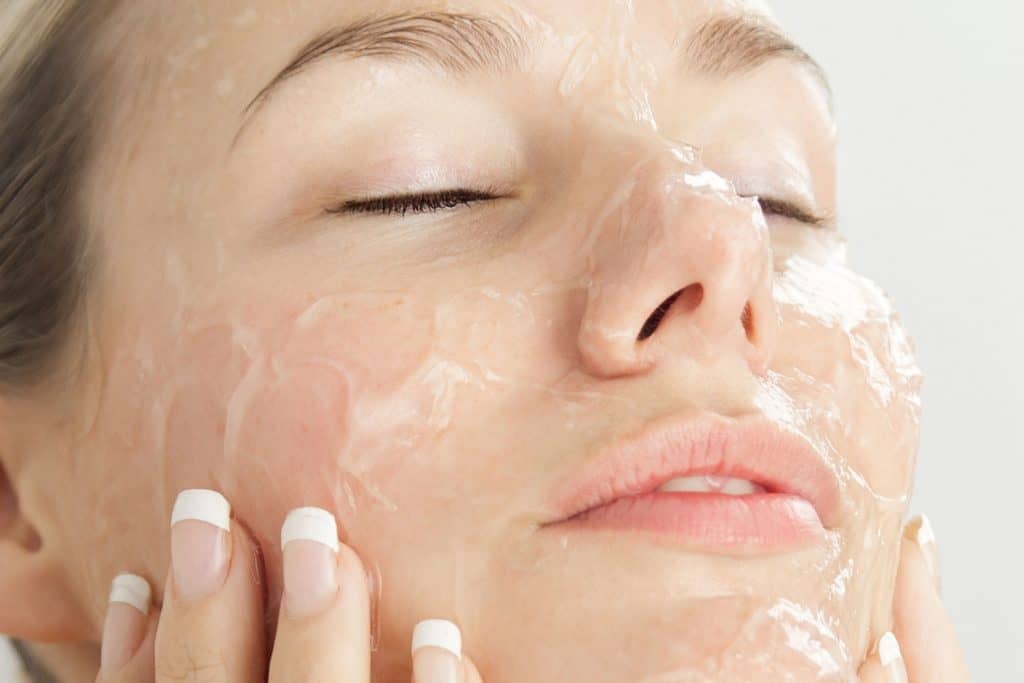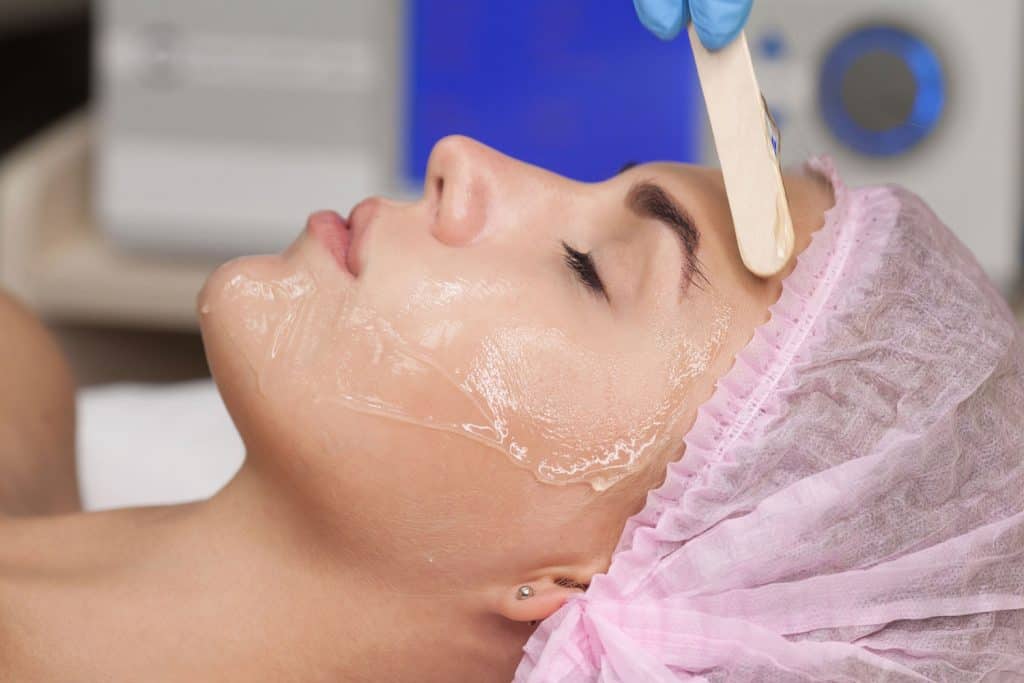Gel masks can be great for dry and sensitive skin, as they can provide it with hydration and help remove harmful toxins. But should you use a gel mask on your face every day? We've done a bit of research on gel masks, and in this post, we will share our findings with you.
The number of times you should use a gel face mask per week depends on your skin needs, the type of mask you are using, and your skin type. Some gel masks are more concentrated in others and should be used no more than once a week. On the other hand, other masks can be used up to three or four times a week. It's best to read the directions and to determine how often you should use the mask.
Gel masks can play a huge role in improving dehydrated skin, oily skin, or skin in recovery from damage. However, it is important to make sure that you use them in moderation and according to your skin type. Continue reading to learn more about how and when to use face masks.

This article may include affiliate links and elements that were carefully created by our team using advanced ai to help you envision the best style advice.
Is it bad to use face masks too often?
Face masks are generally intended to help compliment a skincare routine, meaning that you use them to help give your skin a boost, depending on the type of skin that you have. It's important to remember that facial masks contain additives and significant concentrations of ingredients that may overwhelm your skin if you use them every day. Let's look at the different types of masks and how often they should be used.
Gel masks for oily skin
There are tons of gel masks on the market for oil and acne-prone skin. Many of these masks may contain charcoal, salicylic acid, benzoyl peroxide, and other drying agents. This means that these particular masks may irritate your skin if you use them too frequently throughout the week. If you find that your skin becomes irritated or begins to peel with more frequent use, you may want to decrease the number of times you use them.
Take a look at this gel mask on Amazon.
Gel masks for skin tone improvement
Some gel masks are used to reduce dark spots and offer a more clear skin tone. Masks for these types of conditions may contain ingredients that can potentially irritate your skin. It's best to use these types of masks once a week, as they can also contain lightening agents such as retinol and hydroxy acids. Consult your dermatologist before using these types of masks regularly.
Take a look at this gel mask on Amazon.
Gel masks for sensitive skin
Most of the time, gel facial masks for sensitive skin are made of ingredients that are easy on the skin. The main ingredient is typically water, and other common ingredients can include aloe, green tea, Vitamin C, and collagen.
Learn more about this mask on Amazon.
Hydration gel masks
These types of masks are usually the gentlest because they contain mostly water. This means they are less likely to irritate the skin with frequent use throughout the week. That being said, it's still a good idea to start at a slow frequency, using the masks no more than two or three times a week initially.
Learn more about this gel mask on Amazon.
How do you use a gel face mask?

Before using your face mask, it's always a good idea to check the instructions for precautions and any risks. You'll also want to know the frequency at which the masks are recommended. Here are some general steps for using gel face masks.
1. Wash your face
The first step with using a gel face mask is generally to remove any excess oil or impurities from your skin. This means that your skin should be clean before applying to make the mask. To do this, take a mild cleanser and rub it in your hands along with warm water.
Work up a good lather and massage it into your face starting at the top of your face above your brow line and working your way to your cheekbones and jawline. If you have an oily t-zone, be sure to start in that area first. Next, wet your face with lukewarm or cold water to keep your pores open.
2. Apply the gel mask
Next, take your gel mask out of the packet or container and apply it to your face as directed. Make sure that the mask is touching all of the intended areas of your face, especially above your brow line, on your cheekbones, and your chin. If you have a gel mask formulated for oily skin, pay special attention to these oil-prone areas when applying the mask.
And if you have a hydrating mask, make sure that the mask is covering the area beneath your eyes as well as your cheekbones and jawline. Let the mass sit for anywhere from 2 to 15 minutes, depending on the recommended time. Next, remove the mask and rinse your face with cool water.
3. Apply a moisturizer
Be sure to apply a quality moisturizer after you dry your face. Even hydration masks can leave your skin feeling a little dry, so it's best to lock in the moisture with a good, rich face cream, especially before you go to bed. If you are applying the mask in the morning, you may want to find a face cream with sunscreen to help protect your skin throughout the day.
Do gel masks work?
Different types of gel face masks work for several different purposes. Whether or not your gel masks actually "work" depends on the type and brand of masks you have and the type of skin you have.
Not every gel mask has the same ingredients and formulation. However, common benefits that gel masks are known for include the following:
- Unclogging skin pores to reduce oily skin
- Removing excess dirt and impurities
- Reducing puffiness around and below the eyes
- Improving skin tone and lighten up dark spots
- Hydrating the skin to improve the appearance
A few ingredients that you may often see and gel mask include the following:
Salicylic acid
You'll often see salicylic acid in gel masks, as it helps to encourage the exfoliation of dead skin cells and unclogs pores. It's often used in masks that are formulated for oily skin. It's important to look at the percentage of salicylic acid that the mask contains, as this ingredient can be irritating to the skin, especially when using it for the first time.
Glycolic acid
Glycolic acid is another skin exfoliant that helps to promote a clean and smooth complexion. It's known to encourage cell turnover for more youthful-looking skin. If you are looking for a gel mask that can help rejuvenate your skin and give you a brighter appearance, you may want to look for ones that contain glycolic acid.
Glyceryl cocoate
Glyceryl cocoate works as a lubricant on the skin to help give a smooth and supple appearance and feel. Its ingredients are usually made of fatty acids derived from coconut oil. You usually find this in conditioning or hydrating masks that are targeted toward dry or irritated skin.
Can you reuse a gel mask?
Generally, most gel masks are meant to be used once and then thrown away. This is because it can be harmful to re-introduce bacteria to the skin that the mask has previously removed.
How do you make a homemade gel mask?
There are several different gel masks that you can make right at home, using everyday ingredients. Here is a hydration mask that you can make using cucumber, egg white, yogurt, and honey. The mask has a ton of nourishing fats, lactic acid, and antimicrobial ingredients to help hydrate your skin and improve your complexion.
To make the mask, combine a tablespoon of yogurt with a teaspoon of manuka honey, one egg white, and one-fourth of a cucumber. Blend all of the ingredients in a bowl and apply it to your face. Let the mask sit for about 15 minutes, and then rinse it off with the cool water. Next, apply a quality moisturizer to your face.
Learn more about Manuka Honey on Amazon.
Wrapping Things Up

We hope that this post has helped give you a clearer understanding of how often to wear gel masks, make one at home, and benefit the skin. Before using a new mask, always be sure that the ingredients and the mask are safe and best for your particular skin type.
Before you go, be sure to check out our other posts:






![Scientist holding Cyanoacrylate glue, Is There An Eyelash Glue Without Cyanoacrylate? [A Guide to Finding Safe Alternatives] - 1600x900](https://stylecheer.com/wp-content/uploads/2023/09/shutterstock_2238414685-300x169.jpg)
![Applying lash glue onto fake eyelashes, Why Is My Lash Glue Not Sticking? [Common Reasons and Solutions] - 1600x900](https://stylecheer.com/wp-content/uploads/2023/09/shutterstock_1059533828-300x169.jpg)
![Pouring black lash glue onto a small mat, What Glue Do Lash Techs Use? [A Guide to Lash Extension Adhesives] - 1600x900](https://stylecheer.com/wp-content/uploads/2023/09/shutterstock_1541038103-300x169.jpg)